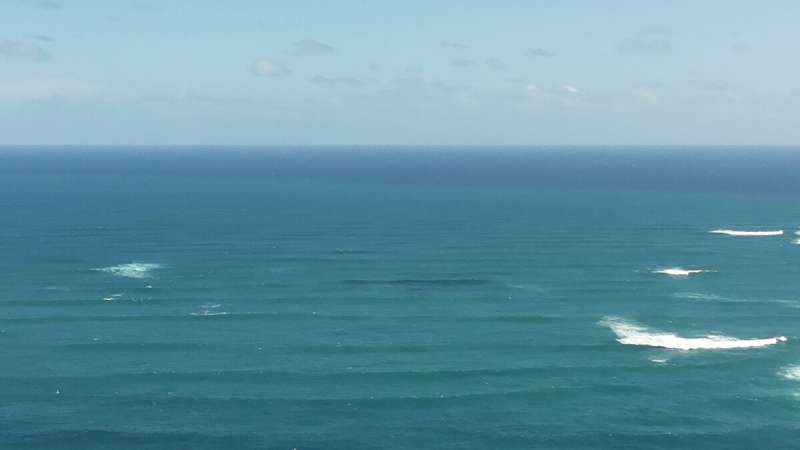Study sheds light on an important Pacific-to-Atlantic connecting current

On a planet covered mostly with water, ocean currents have far-reaching effects, from refreshing the nutrients that support ocean life to influencing coastal climates. These current networks are not set in stone, however, and any significant current changes have the potential to affect conditions around the globe.
The Tasman leakage (TL) is a branch of the larger network of currents in the Southern Hemisphere that operates at intermediate water depths. It slips westward between southern Australia and the east running current that girdles Antarctica, then snakes up through the Indian Ocean to join other waters that then dip around the Cape of Good Hope and out to the Atlantic. TL water supplies nearly half of the water flowing around the Cape of Good Hope, so it provides an important link between the Pacific and Atlantic oceans.
In a new study, Christensen et al. examined both sediment patterns and carbon isotopes from drilling sites across the region's ocean floor to get a better picture of the TL's origins and early effects. They found that by 7 million years ago, Australia had moved far enough north to allow a westward current to flow between the continent and Antarctica's circumpolar current.
At the same time, Earth's global climate and ocean patterns were changing, and the TL was the missing link that ushered in near-modern ocean circulation. Onset of the TL provided a new pathway to return warm, salty Pacific waters to the North Atlantic, but at intermediate depths. This study was based on records recovered with earlier-generation ocean drilling techniques. A detailed understanding of this new current's effects on past oceans and climate requires recovery of new cores that allow for the construction of higher-resolution records.
Scientists project that TL flow will increase over time. By defining the current's history and beginning to examine its effects, experts can make predictions about its future influence on climate and ocean patterns.
More information: Beth A. Christensen et al, Late Miocene Onset of Tasman Leakage and Southern Hemisphere Supergyre Ushers in Near‐Modern Circulation, Geophysical Research Letters (2021). DOI: 10.1029/2021GL095036
Journal information: Geophysical Research Letters
Provided by American Geophysical Union
This story is republished courtesy of Eos, hosted by the American Geophysical Union. Read the original story here.


















